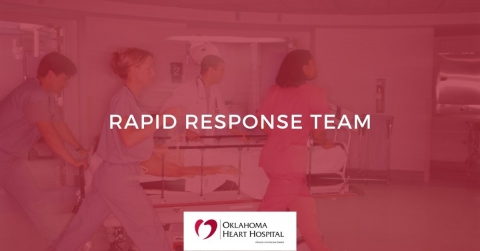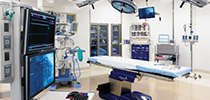Rapid Response Team

If you’re a patient at Oklahoma Heart Hospital, you won’t encounter the Rapid Response team, but they’re working hard behind the scenes. It’s a valuable service offered to referring physicians that streamlines the transfer process and allows patients to get the help they need quickly and efficiently.
What is Rapid Response?
When Oklahoma Heart Hospital was founded, Dr. John Harvey set up a program designed to provide one central number that referring doctors could call. OHH was the first hospital in the state to have that sort of call center, though now it’s a pretty common feature for hospitals.
The vision behind this number was to ensure that Oklahoma Heart Hospital’s cardiac expertise was available to physicians across the state. In some cases, that means transferring patients from rural hospitals or from one of the 60 clinic locations across the state where OHH physicians see patients regularly. In others, it means providing assistance with reading EKGs or consulting on cardiac cases by phone.
The team consists of experienced cardiovascular nurses who are able to determine the right option and take action fast to provide a phone consultation or ensure a smooth transfer process for patients coming to Oklahoma Heart Hospital.
How does it work?
The Rapid Response line is monitored by one team member at a time with rotating shifts of 24 to 48 hours. From 7 a.m. to 7 p.m. calls are answered from the office, and then after-hours calls are forwarded to the on-call team member’s cell phone. Having one single team member assigned for each shift ensures consistency in communication with referring and receiving physicians.
When a physician has a patient that needs OHH’s help or they want to consult with a cardiac specialist, they call the Rapid Response line. A nurse picks up the phone, takes down relevant information and springs into action.
That nurse helps to triage the patient, answer immediate questions from the referring physician and determine next steps for tests or procedures for the patient. A HIPAA-compliant encrypted text app allows them to receive EKGs and other medical information that might be necessary during the process. Once the referring physician has made the call, they’re done—the Rapid Response team takes care of all the other details.
The team member on call finds the right doctor, figures out the correct level of care and whether they need lab or surgery services, schedules ambulance transportation and any urgent procedures, and then calls the referring physician back to give them all the details. The Rapid Response team works in the same office as the House Resources team, so they’re constantly updated on available beds and procedure rooms as well as other factors that can affect when a patient can be transferred for treatment.
Benefits of the Rapid Response approach
Most patients will never know the Rapid Response team exists, but they help the patient in many ways. Because it’s just one person handling all the details, it ensures continuity of care and makes sure all necessary information gets passed along to the appropriate teams at OHH.
Rapid Response also takes a load off both the physicians that refer cases to OHH and the OHH doctors themselves. Having a team to handle the logistics of triage and transfer logistics, among other things, keeps the physicians free to focus on getting their patients the proper care.
It also ensures more resource-strapped hospitals can provide the right care. Small hospitals scattered around the state as far out as Guymon use OHH’s Rapid Response Team for consultations on cardiac cases, and it gives them the extra cardiovascular resources they need to help their patients.
The Rapid Response team averages around 550 calls a month. Some of those are transfers, but some are just consultations or requests for am EKG reading by a specialist. One incoming call to Rapid Response typically results in five or six outgoing calls to make necessary arrangements.
Rapid Response is a powerful tool that allows Oklahoma Heart Hospital to provide huge benefits for physicians and patients alike.




